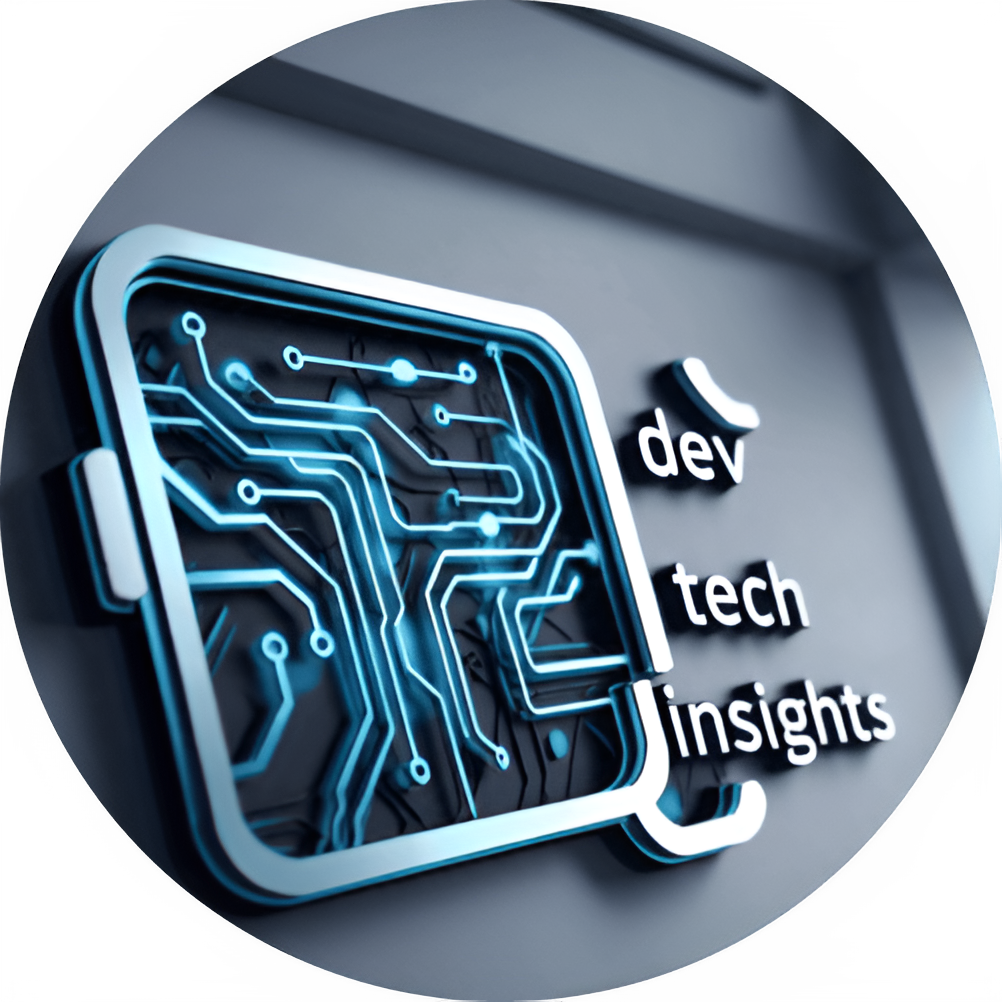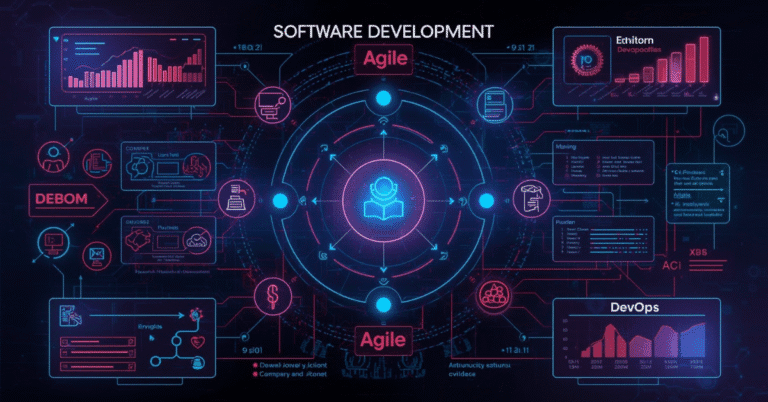
Functional Programming in 2025: Are Pure Functions Making a Comeback?
Table of Contents
Introduction
The world of software development is never static—languages, frameworks, and paradigms rise and fall as technology advances. Among these shifts, functional programming (FP) has always held a special place, admired by academics, researchers, and experienced developers who value clean, predictable code. In 2025, however, FP isn’t just a theoretical or niche approach anymore—it’s making a comeback in mainstream development. With the rise of distributed systems, multi-core processors, and cloud-native applications, the need for predictable, testable, and parallelizable code has never been greater. That’s exactly where functional programming shines, and pure functions are at the heart of this resurgence.
Pure functions—functions without side effects that always return the same output for the same input—are becoming central to modern development trends. Whether it’s AI-driven systems requiring reliability, serverless functions scaling effortlessly, or front-end frameworks emphasizing immutability, developers are rediscovering the power of FP principles. The comeback is not only about better code but also about developer productivity, fewer bugs, and easier maintainability, which are critical in a world where businesses demand faster releases with fewer errors.
In this blog, we’ll explore why functional programming is experiencing renewed interest in 2025, how pure functions fit into today’s programming landscape, and whether this paradigm shift is here to stay or just another wave in software’s cyclical evolution.
What Is Functional Programming?
At its core, functional programming is a paradigm built around mathematical functions, where computation is expressed as the evaluation of functions rather than the manipulation of program state. Unlike object-oriented or procedural programming, FP emphasizes immutability, first-class functions, and declarative style, all of which promote predictability and reduce complexity in codebases.
The central concept of FP is the pure function—a function that depends solely on its input values and produces the same result every time without altering external state. For example, a function that calculates the square of a number is pure, while one that modifies a global variable is not. By eliminating side effects, pure functions make programs easier to test, debug, and parallelize, which is crucial in today’s environment of large-scale, distributed applications.
In practical terms, functional programming isn’t limited to languages like Haskell or Lisp anymore. Mainstream languages such as JavaScript, Python, Java, and even C# have adopted FP features like higher-order functions, map/reduce operations, and immutable data structures. This hybridization means that developers don’t need to abandon familiar ecosystems to take advantage of functional concepts—they can integrate FP practices into their daily workflow with relative ease.
As we move deeper into 2025, FP’s philosophy of immutability and predictability is proving invaluable for modern software challenges, from concurrent execution to microservices and cloud-native architectures. It’s not just a theoretical exercise anymore—it’s becoming a practical necessity
If you want Pdf version with detailed Info, download the pdf below
Benefits of Pure Functions in Modern Development
Pure functions bring a level of clarity and predictability that many modern coding paradigms lack. Since they don’t rely on external state or cause side effects, their output always depends solely on the input. This makes debugging significantly easier—developers don’t need to chase hidden dependencies across multiple files. Moreover, pure functions are inherently thread-safe, meaning they work well in parallel computing, which is increasingly important in today’s multi-core processors. Another key benefit is testability; pure functions can be tested in isolation without needing to mock databases, APIs, or external systems. This streamlined testing process reduces development costs and accelerates delivery. When combined with immutability, pure functions also enable developers to reason about code more effectively, making systems more robust and less prone to hidden bugs.
Pure Functions and the AI/ML Era
Artificial Intelligence and Machine Learning are redefining the boundaries of software, and surprisingly, pure functions are finding their place in this domain too. In ML pipelines, transformations of datasets can often be modeled as pure functions—data goes in, results come out, without modifying the original dataset. This ensures reproducibility, which is a cornerstone of scientific research and experimentation. With AI systems depending heavily on consistent results, pure functions can make processes more reliable and easier to trace. Furthermore, in distributed computing environments where large datasets are processed across multiple nodes, pure functions help maintain consistency and avoid race conditions. As AI models and data pipelines scale, the predictable behavior of pure functions offers a solid foundation for performance and reliability.
Benefits of Embracing Pure Functions in 2025
Pure functions are not just a “functional programming” buzzword — they’re becoming a cornerstone of scalable, maintainable, and testable codebases. In 2025, their role is more critical than ever due to the complexity of distributed systems, multi-cloud deployments, and AI-driven applications.
Here are the top benefits developers are leveraging:
- Predictability and Debugging
A pure function always produces the same output for the same input, without hidden side effects. This makes debugging significantly easier because you don’t need to trace state changes scattered across the system. For example, in a large-scale microservices environment, debugging is simplified since each function behaves consistently. - Easier Testing and Automation
With no side effects, writing unit tests for pure functions is straightforward. In CI/CD pipelines, teams can run lightweight tests with confidence, reducing deployment risks. This predictability allows for automated refactoring tools to safely optimize code. - Parallelism and Concurrency
In the age of multi-core CPUs and serverless platforms, pure functions shine. Because they don’t rely on shared state, they can run in parallel without data conflicts. This enables faster execution of workloads in machine learning training pipelines or big data transformations. - Reusability and Composability
Pure functions are small, modular blocks that can be reused across different parts of a codebase. Developers in 2025 are increasingly building libraries of composable pure functions, enabling rapid prototyping and scaling without reinventing the wheel. - Functional UI Development
Frameworks like React (with hooks) and Svelte rely heavily on pure-function-like components. This makes user interfaces more predictable and responsive, especially with real-time features like live chats, streaming dashboards, or collaborative tools.
Real-World Applications of Functional Programming
The practical strength of FP lies in solving modern development challenges—especially those involving scalability, reliability, and concurrency. Here’s how companies are applying FP in real-world scenarios:
Useful Links
- Software Development Life Cycle (SDLC) in 2025: Stages, Models, and Modern Practices
- The Rise of Composable Software: Why Developers Need to Think Modular in 2025
- Toil is Back: Why Even with AI, SREs Feel the Burn in 2025
- Best Python Libraries for Automation Developers Overlook in 2025
- Why Zig Could Be the Next Big Language for Systems Programming in 2025
- Rust in 2025: Why Developers Are Choosing It for Web and System Development
- Fintech & Banking – Haskell and F# are used to build error-free, secure financial systems where correctness is critical.
- Big Data Processing – Scala and Clojure dominate the big data space, powering systems like Apache Spark to process petabytes of data efficiently.
- Real-Time Messaging & Communication – Elixir runs chat systems, live streaming platforms, and telecommunication apps requiring millions of simultaneous connections.
- Blockchain & Cryptography – Functional purity and immutability make Haskell and OCaml preferred choices for blockchain protocols and cryptographic algorithms.
- AI & Machine Learning – FP’s ability to handle complex state and parallel computations makes it attractive for high-performance AI/ML pipelines.
- Web Development – JavaScript’s FP features (like React’s functional components and hooks) have made FP concepts mainstream in frontend ecosystems.
👉 Companies like WhatsApp, Discord, Klarna, and Coinbase leverage FP principles to achieve fault tolerance, scalability, and security at scale.
Challenges and Limitations of Functional Programming in 2025
While Functional Programming (FP) has gained significant traction, it’s not without its challenges. Even in 2025, many teams face barriers when adopting FP principles, particularly in enterprise settings. Here are some of the key limitations:
- Steep Learning Curve
Many developers coming from imperative or object-oriented programming (OOP) backgrounds struggle with concepts like immutability, higher-order functions, and monads. This steep learning curve can slow adoption in fast-moving development teams. - Performance Overheads
Because FP emphasizes immutability and recursion, certain operations can be less performant compared to traditional approaches. For example, heavy reliance on recursion may introduce stack overflow risks unless tail-call optimization is supported. - Tooling and Ecosystem Maturity
Although FP languages like Haskell, Clojure, and Scala have mature ecosystems, mainstream languages (JavaScript, Python, Java) often provide only partial support. This fragmentation can complicate adoption, especially when teams need strong library and framework support. - Integration with Legacy Systems
Many businesses still rely heavily on legacy, OOP-based systems. Integrating FP code with such environments can introduce complexity and require hybrid approaches that reduce some of FP’s purity and advantages. - Team Resistance and Culture Shift
Moving to FP requires a mindset shift from “how to do things step by step” (imperative) to “what outcome should be produced” (declarative). Resistance from developers and stakeholders who are comfortable with OOP is a major hurdle. - Limited Talent Pool
Despite growing interest, FP developers remain in shorter supply compared to Java, Python, or JavaScript engineers. This can make hiring difficult for companies adopting FP-heavy stacks.
In short: FP is powerful, but practical challenges—both technical and cultural—still limit its widespread adoption.
The Future of Functional Programming in Development
Looking ahead, Functional Programming is set to play an even more critical role in modern software engineering. Here’s why the future looks bright for FP in 2025 and beyond:
- Rise of Multi-Paradigm Languages
Languages like TypeScript, Kotlin, Swift, and Python are increasingly blending FP principles into traditionally imperative/OOP ecosystems. This hybrid approach allows developers to adopt FP concepts gradually without abandoning familiar paradigms. - Mainstream Adoption in Enterprise Software
With the push for scalability, concurrency, and fault-tolerance, enterprises are moving toward FP-inspired approaches. Financial services, data analytics, and AI-driven applications especially benefit from FP’s immutability and predictable state management. - Growth in AI and Data Engineering
Functional Programming’s deterministic and pure function-based approach is perfect for machine learning pipelines, big data transformations, and parallel processing. Expect to see FP concepts dominate data engineering workflows in the coming years. - Cloud-Native and Serverless Architectures
FP is naturally aligned with stateless and event-driven systems—both key characteristics of serverless computing. As organizations migrate more workloads to cloud-native platforms, FP adoption will accelerate. - Education and Awareness
Universities, coding bootcamps, and online learning platforms are increasingly teaching FP principles alongside OOP. As new developers enter the workforce with hybrid knowledge, the talent pool will grow. - Tooling Improvements
IDEs, compilers, and frameworks are being optimized for FP. For example, advanced type systems (in TypeScript, Rust, Haskell, etc.) and FP-friendly libraries in Python and JavaScript are lowering adoption barriers. - FP in AI-assisted Coding
With AI coding assistants (like Copilot and ChatGPT-powered IDEs), developers will more easily learn and adopt FP principles, since AI can handle some of the syntactic and conceptual complexities.
Conclusion: The future of FP isn’t about replacing OOP—it’s about integration. By 2030, most modern applications will likely be built with a multi-paradigm approach, where FP plays a central role in ensuring scalability, reliability, and maintainability.
FAQs
1. What is functional programming, and why is it important in 2025?
Functional programming (FP) is a coding paradigm that treats computation as the evaluation of mathematical functions, avoiding shared state and mutable data. In 2025, FP is important because it enables cleaner, more predictable, and highly scalable applications—making it ideal for cloud-native, distributed, and AI-driven systems.
2. Which programming languages are best for functional programming today?
Some of the most popular FP languages in 2025 include Haskell, Clojure, Erlang, Scala, F#, and Elixir. However, mainstream languages like JavaScript, Python, and Kotlin now support FP concepts, making them accessible to a much wider range of developers.
3. Is functional programming better than object-oriented programming (OOP)?
Not necessarily—it depends on the project. FP excels in parallel computing, data processing, and immutability-driven workflows, while OOP is often more intuitive for business logic, UI-heavy applications, and modular codebases. In 2025, many teams use a hybrid approach, combining FP and OOP where each is strongest.
4. What are the main challenges of adopting functional programming?
The biggest hurdles include:
Steep learning curve for developers used to OOP.
Performance trade-offs in certain real-time systems.
Limited ecosystem compared to mainstream paradigms.
Hiring difficulty, as fewer developers specialize in pure FP.
5. How does functional programming help with AI and machine learning?
FP’s immutability and pure function principles make it excellent for handling large data pipelines, training reproducible ML models, and ensuring deterministic outputs—crucial for AI reliability and fairness.

🚀 Let's Build Something Amazing Together
Hi, I'm Abdul Rehman Khan, founder of Dev Tech Insights & Dark Tech Insights. I specialize in turning ideas into fast, scalable, and modern web solutions. From startups to enterprises, I've helped teams launch products that grow.
- ⚡ Frontend Development (HTML, CSS, JavaScript)
- 📱 MVP Development (from idea to launch)
- 📱 Mobile & Web Apps (React, Next.js, Node.js)
- 📊 Streamlit Dashboards & AI Tools
- 🔍 SEO & Web Performance Optimization
- 🛠️ Custom WordPress & Plugin Development







